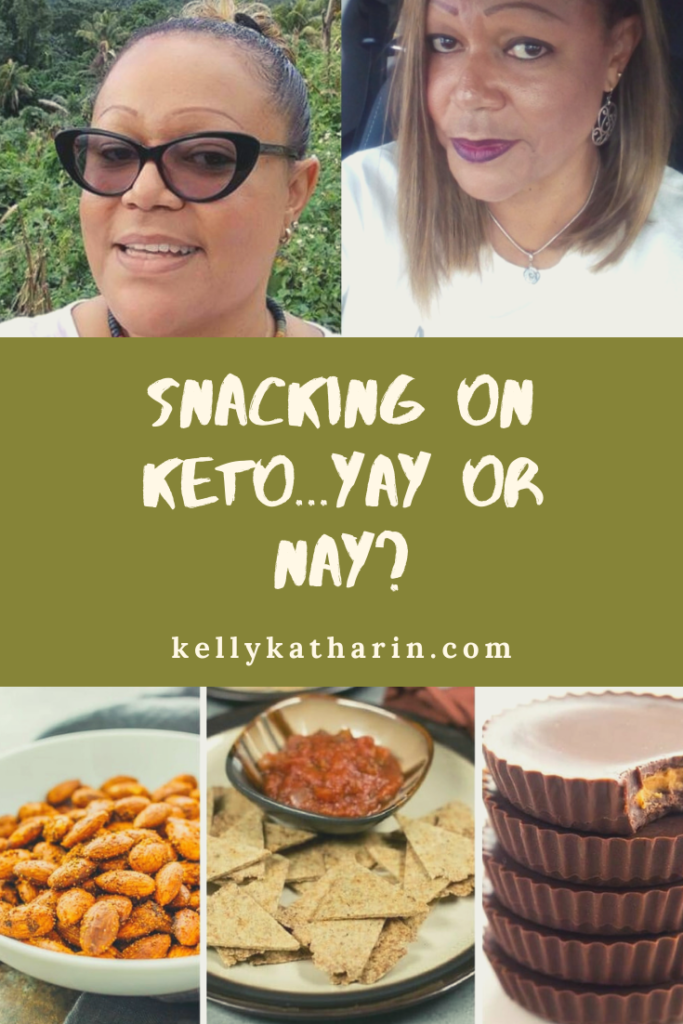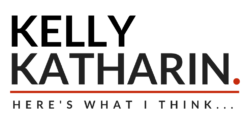In my last post “Are Cravings and a Snacking habit getting the better of you?” I explored why we crave the foods we do, why we snack and what giving in to said cravings and a snacking habit could be doing to your health and your livity. If we’re keeping it a buck fifty, the foods we crave all tend to be high-carb, highly processed foods: chips, cookies, ice-cream, bread. And we established that there are valid physiological and psychological reasons at play. You’re not weak neither are you greedy. These hyper-palatable carbohydrate rich foods trigger pathways in our brain that simply make us feel good and when we remain in constant search of that feel-good place we simply repeat the behaviour that led to it in the first place: ergo, dependency or addiction.
This dependency on high-carb, hyper-palatable foods for many, many of us negatively impacts our health (we gain weight or we have difficulty taking and keeping off weight), we get bloated and live with various gut-issues like acid reflux & general discomfort, and we are simply trapped in a vicious cycle of having to be constantly thinking of what next will we eat in order to avoid “hangry” states throughout our day. Sounds familiar? Ok. So what next? Do we simply cut out these carbs and flourish? Easier said than done, right? If there is an actual factual dependency on these foods at play, HOW do we break the dependency and how do we meet the need that gave rise to this dependency in the first place?
If there is an actual dependency on high carbohydrate, hyper-palatable (delicious, easy to enjoy) foods at play, HOW do we break the dependency and how do we meet the need that gave rise to this dependency in the first place?

Why are you eating?
Many of us find it easier to stick to any weight loss eating plan Monday to Friday when we’re busy at work. It is when we disengage from work on a Friday evening and during the weekends that the wheels come off and we completely sabotage all the good we did during the week. Some of us can’t even make it to Friday evening! Talk the truth ! You stick to your plan all day and then come the evening, you throw of your shoes, strip off your bra (Ladies!) and watch TV while picking at this, that and the other, all of the above being high carb: cookies, crackers, BREAD, ice-cream. You know I’m right! Here’s the thing: only YOU can clearly articulate the role that food, specifically carbs, is playing for you right now: are those carb-rich foods relieving boredom? Soothing you? Comforting you? Calming you?
Once you define the role that food is playing for you, then you can move to exploring and then deciding on what you’ll use INSTEAD OF food.
The Dirty Blanket Analogy
Imagine this: you’re cold. You grab that red blanket and wrap yourself in it. You feel warm again. But then I come along and say: “You can’t use that blanket! It’s dirty! It will make you sick!” Then I grab the blanket and toss it into the washing machine. Ok. I didn’t lie. The blanket was dirty and I did what you should do with a dirty blanket: wash it. In the meantime though, you’re cold again! You have a valid need that needs to be met. I can’t simply take away the dirty blanket, I’ve got to REPLACE it, or you’ll freeze to death. You can cut those foods out of your life, but then what next?
Having determined the role that the food is performing in your life- the need that is being met- you can then determine your response once you choose to get rid of those foods:
You snack because you’re bored. What can you do instead?
- Find something else to do with your hands and mouth: crotchet, knit, puzzles, gardening.
- Go walking after dinner if it is safe. 20 to 30 minutes is all you need. You’ll clear your head and release endorphins through movement instead of via neural pathways that are lit by carb-rich foods. The result? Zero boredom PLUS feel good the healthy way.
- Escape in a book. Mindless fiction has rescued me many a time.
Yes, this means forming NEW HABITS, a hurdle to mount to be sure, but not at all impossible. In this post I explored the anatomy of a habit and how to break old ones and form new ones.
You crave that ice-cream or those chips in response to STRESS. What else can you do?
So if food is CALMING you down or SOOTHING you, here are my suggestions at dealing with those very valid emotions you’re going through:
- Why aren’t you calm? What are you anxious about? Write them down. BE VERY SPECIFIC.
- Challenge those fears: are they legitimate? What can you do to mitigate the risks/issues you face?
- Pray about them. Pray about what you think you can do to mitigate. There have been many studies about the role of FAITH in dealing with apparent negative situations. Not a person of faith? No worries. Skip this suggestion. Simple.
- Talk with someone if you can. Or write a letter to yourself about them. Putting our fears out into the open strips them of their power. All of a sudden, they don’t look so big and scary.
- Find other ways to self-soothe: light exercise, a walk in the fresh air, writing, escaping in light fiction, a drive out, a new hobby where you’re using your hands like gardening, crocheting, sewing, baking low-carb goodies :). Yoga is very good for centering your mind and calming racing thoughts and heart rates. There are lots of good beginner videos on YouTube if this interests you. 2 or 3 x per week is a great start.
As you start to deal with the drivers of your desire for those foods, it becomes easier to drop them, because you know what’s bugging you and you have decided on dealing with them head-on and in healthier ways. If you’ve gotten to here, that’s a huge victory. Remember my invitation earlier to visit my past post on breaking old habits and forming new ones. This could be helpful as you seek to break free from the shackles of cravings and snacking.

The more you starve a craving, the weaker it becomes!
Next comes planning your meals and identifying good low-carb substitutes. Starving carb cravings makes them weaker. So prioritize protein at meal times. Protein keeps you fuller for longer. Still hungry between meals? Reach for protein! This reduces hunger in the evenings in particular. Too many automatically think that “eating clean” or “healthy eating” is automatically plant based. So they eat a salad or drink a green smoothie and press on through their day. OF COURSE you’re going to hungry when you get home and fling off those shoes and strip off that bra! EAT MORE PROTEIN! This satisfies the BIOLOGICAL component of your need to eat.
Convenient sources of quality protein:
- Eggs. Keep a few hard-boiled in your refrigerator.
- Canned fish like tuna or sardine. Have cans on hand at all time. Carry one or two in your purse.
- Cheese
- A store bought rotisserie chicken cut up and placed in singe serve portions in zip-lock bags or containers and frozen ensures a chicken leg or breast ALWAYS within easy reach. Re-heat and go!
- Frozen all meat or fish burger patties cook up quickly and are a way better choice for the evening munchies than bread or crackers.
Some people find that low-carb substitutes are useful when trying to kick a high-carb habit. I call these transitional foods. They helped keep me compliant in the early days of my journey. It is very likely that the more you eat low-carb, the less need you’ll find that you have for these transitional foods.

A low-carb treat that’s better for you if you’re trying to lose weight & improve your health, than any cake made with wheat and sugar.
If you are operating from a place of addiction, you may find that these transitional foods are counter-productive, perpetuating the cycle of cravings and addiction. How do you know if you’re a food/sugar addict ? Check out Jen Unwin’s excellent book “Fork In The Road” where she provides a questionnaire that can help you find out. Also, check out my post here, where I provide a simple tool that you can use to determine if addiction may be an issue in your specific situation.
The key is SELF HONESTY. If you’re an alcoholic, one glass of wine will be lethal. If you’re a sugar addict, one slice of low-carb cake will be lethal.
“To thine own self be true.” Food Addict or merely an emotional eater?
https://kellykatharin.com/are-cravings-a-snacking-habit-getting-the-better-of-you-part-1/#more-2142
DISCLAIMER
I am not a medical doctor nor am I a certified nutritionist or psychologist and make no claims to the contrary. Each individual’s dietary needs and restrictions are unique to the individual. You are ultimately responsible for all decisions pertaining to your health. Nothing stated in this post or on this website should be taken as advice, nor is it intended to diagnose, treat, cure or prevent any disease. It should not be considered a substitute for professional medical expertise or treatment. You assume full responsibility for consulting a qualified health professional regarding health conditions or concerns, and before starting any diet or making any change in your lifestyle.

Dealing with the Emotional Drivers of Food Cravings
Food comforts and soothes. High carb foods in particular do this exceedingly well. So far I’ve suggested forming hew habits and breaking old ones. I’ve suggested starving a craving to make it weaker. But let’s step back and dig a little deeper. There are those who have deep-seated, personal, BIG, reasons why they need soothing and comforting. Issues like past sexual trauma, rejection by a spouse or a parent, violent experiences in the past are some that come to mind. Simply bumping up protein at meals or finding a low-carb replacement for bread will not cut it in these instances!
It is important to get to the ROOT of the need for comfort and soothing. And in some instances, sessions with a professionally trained therapist or counselor will be absolutely necessary. I highly recommend therapy as a way to deal with deep-seated difficult to navigate issues. A good therapist will ask the right questions to lead to self-discovery, encourage honesty and peeling back the layers that we had to build over time in order to cope, ways to identify the triggers that lead to emotional eating, and coping mechanisms other than eating that will work for YOU.
Therapy can be painful, putting you in a very vulnerable space. But unless you expose and deal with those issues in the safe space that therapy provides, you will find all your efforts at dealing with your unproductive cravings falling flat. Life is short. You deserve more. You deserve better.
Forming new habits to self soothe, starving your cravings, therapy AND SUPPLEMENTING WITH SPECIFIC AMINO-ACIDS
I have no experience in the use of supplements to combat cravings. I have done some reading around the topic and listened to talks and lectures by experts who claim success by some who’ve done targeted supplementation as part of their tool box against difficult to shake cravings. I should note here that one of the thought leaders and practitioners who uses targeted supplementation based on the specific needs and health status of her clients reports best results when supplementing is done in conjunction with therapy, while following a low-carbohydrate eating protocol.
IMPORTANT NOTE:
The information I will share below is not a recommendation. It is given solely for information purposes. As always, before you change your diet or take any supplements, consult with your medical provider and follow their guidance.
It is no surprise to me that amino acid supplements could be useful in combating seemingly uncontrollable cravings. Amino-acids are literally the building blocks of proteins, and we’ve already discussed the importance of protein in helping us break free of the shackles of carbs and cravings.
L-Glutamine supports energy metabolism in the brain, reducing symptoms of low blood sugar. Glutamine is used to reduce cravings for alcohol, sugar & other addictive substances.
GABA (Gamma Amino Butyric Acid): decreases insomnia, muscle tension, and anxiety.
5HTP/L-Tryptophan: helpful for symptoms of Serotonin deficiency such as social anxiety, an agitated, anxious depression, irritability and aggression, PMS, chronic pain, carbohydrate craving and binge behaviors, and insomnia.
L-Tyrosine: Tyrosine is used to reduce symptoms of withdrawal from caffeine, cocaine and methamphetamines. It also supports thyroid function.
D-Phenylalanine (DPA): used to reduce withdrawal symptoms from and cravings for heroin, oxycodone and other opiates. DPA may also reduce pain awareness, & can decrease the amount of required pain medication. It may help with intense grieving & emotional pain.
Only use these amino-acids under guidance and management of someone trained in their usage, who will advise you on recommended doses & time of day to take.
Interested in learning more about amino acid therapy? Check out this reference: https://aminoacidtherapy.com/amino-acid-therapy

Taken along the Palisadoes Strip, Kingston Jamaica at daybreak, during the Pandemic.
Practical Self-Soothing Ideas for us here in Jamaica!
What follows are location specific ideas for alternatives to food-only options for self-soothing. Even if you are not in Jamaica, you can grab on to the gist of the suggestion and apply it in your location. So you can’t go to Cable Hut beach for example, but is there a body of water near where you are? Bingo! You’ve identified YOUR Cable Hut! And yes, we’re still in the middle (is it the middle, end, still at the start of this ???) of a pandemic. So mask up, keep your contacts small in terms of numbers and appropriately physically distanced and keep your hands clean and DO IT!

- Enjoy a leisurely cup of coffee at one of the smaller coffee shops where you can sit for a while. I enjoy my coffee with heavy cream. Feel free to add a pump or two of a flavoured sugar free syrup for a treat!
- Drive out to the Palisados strip or Cable Hut beach. Go early and get some early morning sunshine. Let the soundtrack of the crashing waves slow your heartbeat down and let the vista of the never ending ocean re-set your perspective. Are you there with a friend? Even better! Feel free to gossip and keep the convo light. Laughter is still the best medicine.
- Drive up to Holywell and walk a trail. Its 45 minutes from Papine, and there are trails you can do in 40 minutes. Inhale deeply! Forest bathing is a thing, and you’d be surprised at just how soothing being immersed in bird-song and green can be.
- Drive up to Cafe Blu Irish Town for coffee. Inhale!
- Plan a day trip to Lovers Leap or Jack Sprat, St. Elizabeth. Depart Kingston 7am. Get back before 8pm 6. Use the highway! Put on your favourite music, buy jerk on Spur Tree Hill or enjoy fish in Treasure Beach or Alligator Pond
- It’s a hop, skip & a jump from Kingston to St. Ann. Go have lunch near the sea! Sharkies is good.
- Plan a brunch or high tea for no more than 3 of you at your own home. Sip low-carb alcoholic beverages or not. Prepare low-carb treats like keto pizza, crustless quiches, keto cookies and cakes. Fellowship. LAUGH.

Wave action and sunshine: 2 of my favourite coping mechanisms!
This is Long Bay, Portland, Jamaica
The form you have selected does not exist.
COMMUNITY: a critical part of combating addiction.
Any addiction thrives in isolation. Even when our brains are impaired to the point where reasoning our way out of a craving (#IYKYK!) there are brain cells that can simply copy what we see others around us doing: mirror neurons. This is why all 12-Step programmes (think Alcoholics Anonymous) have as a critical part of their recovery programme, a community engagement aspect. If you are trying to change the way you eat, get into community. Online groups are great, or form a group at your workplace or get your family to commit to change and do it together as a team.
Feel free to join our Caribbean Keto Tribe support group on Facebook. We’re a community of like-minded people who LOVE flavourful, colourful food that is low-carb. Come for inspiration and support!
I also convene small groups where we meet weekly via Zoom and connect daily over Whatsapp as we eat the low-carb way. The success rate of participants has been consistently high. It feels like magic, but it is really that we leverage the power of mirror neurons in our brains, giving our brains a new alternative to the “normal” that exists around us. Interested in joining this safe, non-judgemental space? Connect with me here for more information.

Manage stress without food


Very well written and informative!
Thank you, Candiece!
Some very good points raised here and lots of “food” for thought. I’m in my 4th week of keto and you have been a big part of my inspiration to start this journey. Thank you.
Congratulations on 4 weeks of taking control of your health!
I hope you enjoy your journey. Thank you for your kind words as well. All the best!